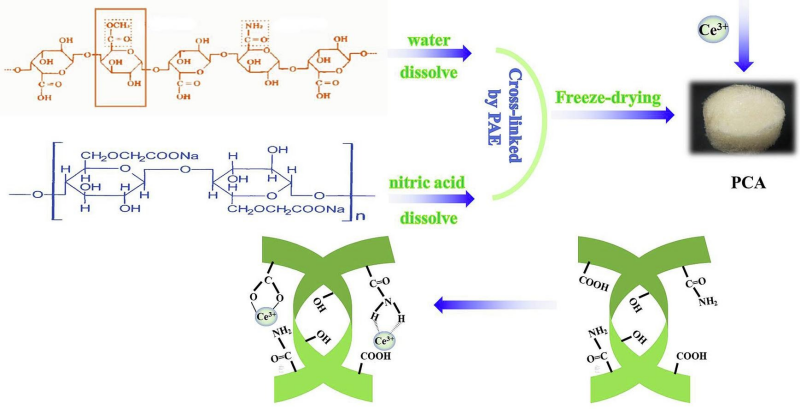Qingdao Energy Institute develops a new biomimetic adsorption material based on rare earth hyperaccumulated plants
Under the background of the two-carbon strategy era of carbon peak and carbon neutrality, energy transformation has become a global consensus. Rare earth elements are known as "industrial vitamins" and " mother of new materials". As the strategic resources for the development of high and new technology, they have become increasingly important with technological breakthroughs. As a major exporter of rare earths, optimizing the green and efficient comprehensive utilization of rare earth resources, breaking through the technical bottleneck of low concentration rare earth recycling, and achieving sustainable development of the rare earth industry have become important issues in the development and utilization of rare earth mineral resources in China.
Recently, the Green Reaction Separation and Process Enhancement Technology Center of Qingdao Energy Institute has developed a new type of biomimetic adsorption material based on rare earth hyperaccumulated groups which has made a series of progress for green and efficient adsorption of low concentration rare earth ions in leaching tailings.
The relevant results have been published in the Chemical Engineering Journal.
In this work, a new cellulose/pectin composite aerogel adsorbent based on hyperaccumulated plant cell wall was prepared, which was used to recover rare earth elements from ore leaching tailings. The main components of the obtained adsorbent were systematically analyzed using SEM, FTIR, XRD, and contact angle measuring instruments. The research results have shown that the surface of PCA adsorbent has abundant active adsorption groups, low crystallinity, and good hydrophilicity, and has excellent structural basis in the field of adsorbing rare earth ions.
Thermodynamic studies have shown that the adsorption process conforms to the Langmuir model, with a theoretical maximum adsorption capacity of 337.36 mg/g. Dynamics studies have shown that the adsorption process follows a pseudo-second-order kinetic model, and the adsorption process was designed for chemical adsorption. The adsorbent still exhibits good adsorption performance after five cycles of adsorption desorption. From FTIR and XPS spectroscopic analysis, it can be concluded that the adsorption mechanism of PCA for rare earth ions is mainly achieved through electrostatic interactions, ion exchange with –COO-, and chelation with C-NH2.
Overall, the novel cytoderm-based biomimetic aerogel PCA has potential application as a promising adsorbent for adsorption of Ce (Ⅲ) due to its excellent reusability.

Synthesis and adsorption process of PCA adsorbents
(Text and image by YU Changjiang)
Contact:
KONG Fengru
Qingdao Institute of Bioenergy and Bioprocess Technology, Chinese Academy of Sciences
Tel: 86-532-58261072
E-mail: kongfr@qibebt.ac.cn